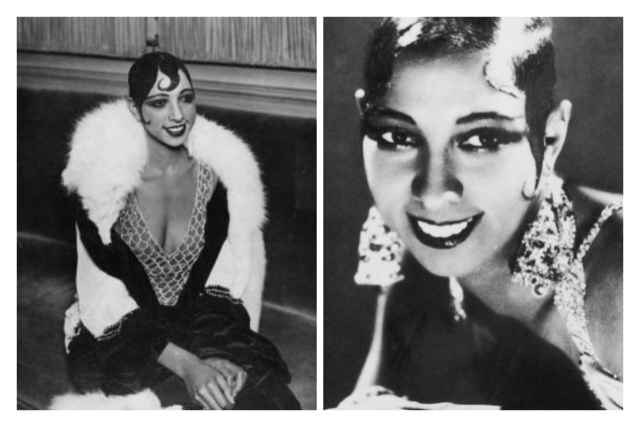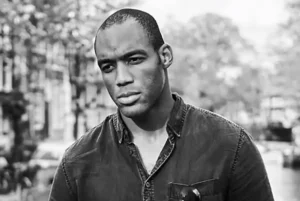The late-great Josephine Baker is well-known France and Europe, but never quite received her flowers while alive in America, where she was born. We know much of her legacy through a movie about her life, starring Lynn Whitfield, but many of us were not taught about the woman who used her stardom as a 1920s singer and exotic dancer to become a wartime spy and fierce advocate for civil rights, who also spoke at the 1963 March on Washington. We take this moment to honor her in this week’s “Know Your History.”
The legendary performer from Saint Louis, Missouri was recently granted one of France’s highest honors: A tomb in the Pantheon in Paris, the country’s monument to its heroes.
There have been only 80 people granted the honor since the tradition began in Napoleonic times. Baker is the first Black woman honored at the Pantheon, according to the Elysee Palace. She is also only the sixth woman, which includes scientist Marie Curie and politician Simone Veil. Though her body remains buried in Monaco at the request of her family, a coffin was entombed at the site bearing handfuls of dirt from four important locations in her life — Saint-Louis, Paris, Milandes — the site of her chateau home — and Monaco. The date of her interment also holds significance, marking the anniversary of when she received French citizenship in 1937.
Freda Josephine McDonald was born on June 3, 1906, in St. Louis, Missouri. Her mother, Carrie, was adopted in Little Rock, Arkansas, in 1886 by Richard and Elvira McDonald, both of whom were former slaves of African and Native American descent.
She spent her early life in the Mill Creek Valley neighborhood of St. Louis, a racially mixed low-income neighborhood near Union Station, consisting mainly of rooming houses, brothels, and apartments without indoor plumbing. She was poorly dressed and hungry as a child, and developed street smarts playing in the railroad yards of Union Station.
At eight years old, Josephine began working as a live-in domestic for white families in St. Louis. One woman abused her, burning Josephine’s hands when the young girl put too much soap in the laundry.
In 1917, when she was 11, a terrified Josephine McDonald witnessed racial violence in East St. Louis, Illinois. In a speech years later, she recalled what she had seen:
“I can still see myself standing on the west bank of the Mississippi looking over into East St. Louis and watching the glow of the burning of Negro homes lighting the sky. We children stood huddled together in bewilderment . . . frightened to death with the screams of the Negro families running across this bridge with nothing but what they had on their backs as their worldly belongings… So with this vision I ran and ran and ran…”
By age 12, she had dropped out of school. At 13, she worked as a waitress at the Old Chauffeur’s Club, and also lived as a street child in the slums, sleeping in cardboard shelters, scavenging for food in garbage cans, making a living with street-corner dancing. It was at the Old Chauffeur’s Club where Josephine met Willie Wells, and subsequently married him at age 13; however, the marriage lasted less than a year. Following her divorce from Wells, she found work with a street performance group called the Jones Family Band.
In her teen years she struggled to have a healthy relationship with her mother, who did not want her to become an entertainer and scolded her for not tending to her second husband, William Howard Baker, whom she married in 1921 at the age of 15. She left him when her vaudeville troupe was booked into a New York City venue, and divorced in 1925; it was during this time she began to see significant career success, and she continued to use his last name professionally for the rest of her life. Though Baker traveled, she would return with gifts and money for her mother and younger half-sister, but the turmoil with her mother pushed her to make a trip to France.
In France, she became an icon. She was the first black woman to star in a major motion picture, the 1927 silent film “Siren of the Tropics,” directed by Mario Nalpas and Henri Étiévant.
Baker was among the most celebrated performers to headline the revues of the Folies Bergère in Paris. Her performance in the revue Un vent de folie in 1927 caused a sensation in the city. Her costume, consisting of only a short skirt of artificial bananas and a beaded necklace, became an iconic image and a symbol both of the Jazz Age and the Roaring Twenties.
Baker was celebrated by artists and intellectuals of the era, who variously dubbed her the “Black Venus,” the “Black Pearl,” the “Bronze Venus,” and the “Creole Goddess.”
She aided the French Resistance during World War II. After the war, she was awarded the Resistance Medal by the French Committee of National Liberation, the Croix de Guerre by the French military, and was named a Chevalier of the Légion d’honneur by General Charles de Gaulle. Baker sang: “I have two loves, my country and Paris.”
Baker refused to perform for segregated audiences in the United States and is noted for her contributions to the civil rights movement. In 1968, she was offered unofficial leadership in the movement in the United States by Coretta Scott King, following Dr. Martin Luther King Jr.’s assassination. After thinking it over, Baker declined the offer out of concern for the welfare of her children.
In her later years, Baker converted to Catholicism. In 1968, Baker lost her Château owing to unpaid debts; afterwards Princess Grace offered her an apartment in Roquebrune, near Monaco.
On 8 April 1975, Baker starred in a retrospective revue at the Bobino in Paris, Joséphine à Bobino 1975, celebrating her 50 years in show business. Demand for seating was such that fold-out chairs had to be added to accommodate spectators. The opening-night audience included Sophia Loren, Mick Jagger, Shirley Bassey, Diana Ross and Liza Minnelli.
Four days later, Baker was found lying peacefully in her bed surrounded by newspapers with glowing reviews of her performance. She was in a coma after suffering a cerebral hemorrhage. She was taken to Pitié-Salpêtrière Hospital, where she died, aged 68, on 12 April 1975.









